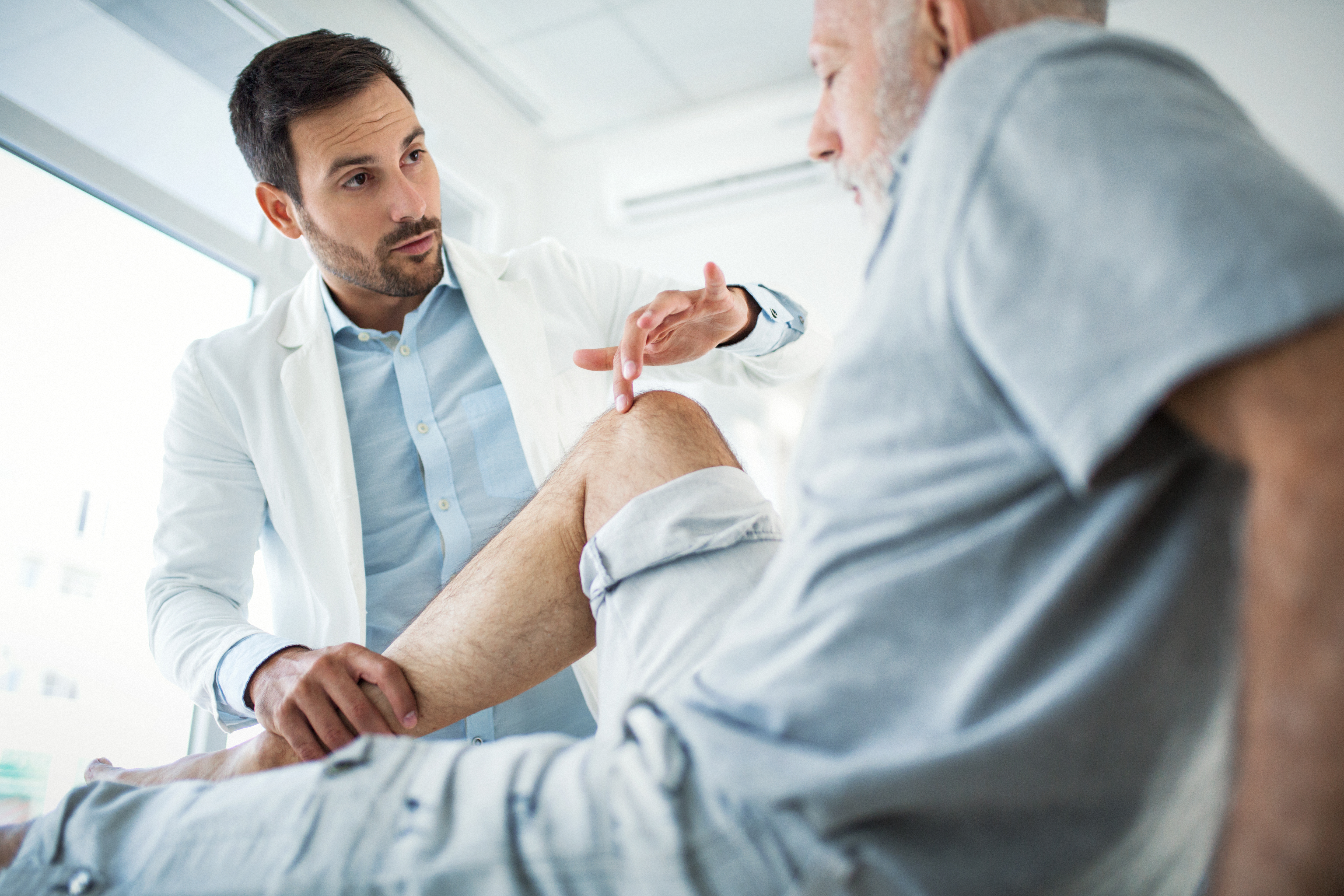7 Min Read
Identifying the Types of Arthritis & Tips for Care

Arthritis is one of the most common diseases in this country. According to the Arthritis Foundation, there are roughly 54 million adults in the United States with a diagnosed case of arthritis.
In most cases, people commonly think of arthritis as the condition of having painful, stiff joints. But there are several types, each with different symptoms and treatments. Most types of arthritis are chronic with symptoms lasting years or are caused from pre-existing conditions. Below are the most common types of arthritis and tips to help reduce pain and discomfort.
Rheumatoid Arthritis (RA)
Rheumatoid arthritis is an autoimmune disease. The body’s immune system normally protects from viruses and bacteria, but with RA, the joints and organs are attacked by the immune system. In most cases, the immune system primarily goes after the lining of the joints, called the synovium.
Over time, the persistent inflammation breaks down the joint and damages it permanently. The pain that RA patients experience comes from the inflammation in the joints that this condition causes. That inflammation leads to pain and swelling that can last for several hours.
The most common places for RA to flare up are in the fingers, wrist, shoulders, elbows, hips, knees, ankles, feet, and neck. While both men and women can get the condition, it is more common in women.
Osteoarthritis (OA)
Osteoarthritis is the most common type of arthritis in seniors. OA starts when cartilage begins to become ragged or weak and wears away. When OA is most severe, all of the cartilage in a joint wear away, leaving bones to rub against each other. Seniors experiencing OA are most likely to have it in their hands, neck, lower back, or in weight-bearing joints such as knees and hips.
OA symptoms can range from stiffness and mild pain that comes and goes with activities like walking or bending, to severe joint pain that persists even when sleeping. OA can cause joints to feel stiff when they haven’t been moved in a while, like after riding in the car.
Psoriatic Arthritis (PsA)
Psoriatic arthritis is an autoimmune inflammatory disease in which the immune system attacks the body, causing inflammation and pain. The vast majority of PsA cases will begin with psoriasis. This skin condition causes scaly, itchy patches that can occur in a variety of ways. People who have had psoriasis in the past, even if it was several years ago, are at risk for PsA.
PsA symptoms can vary among people, but the most common symptoms include joint swelling or stiffness, pain in joints and lower back, inflamed toes or fingers, fatigue, itchy red skin, and tendinitis. Most of the symptoms of PsA are common signs of other types of arthritis, which makes this type difficult to diagnose.
Tips for Arthritis Care
Each type of arthritis is handled a little differently, but there are some common treatment choices. Rest, exercise, eating healthy, and learning the right way to use and protect your joints are vital to living with any type of arthritis. There are also medicines that can safely ease arthritis pain and swelling, such as acetaminophen, ibuprofen, and naproxen.
Along with taking the right medicine and properly resting your joints, exercise is a great way to stay fit, keep muscles strong, and control arthritis symptoms. Daily exercise, such as walking or swimming, keeps joints moving, decreases pain, and makes muscles around the joints stronger.
Other popular physical activities for pain relief include range-of-motion exercises like dancing and yoga, strengthening exercises like light weightlifting, and aerobic and endurance exercises like bicycling and jogging.
Applying heat or cold to the affected arthritic area may also help to treat the pain of arthritis. Even soaking in a warm bath or heated pool can help reduce pain. Wearing the right shoes can protect your feet and decrease the impact on joints.

0 Comments